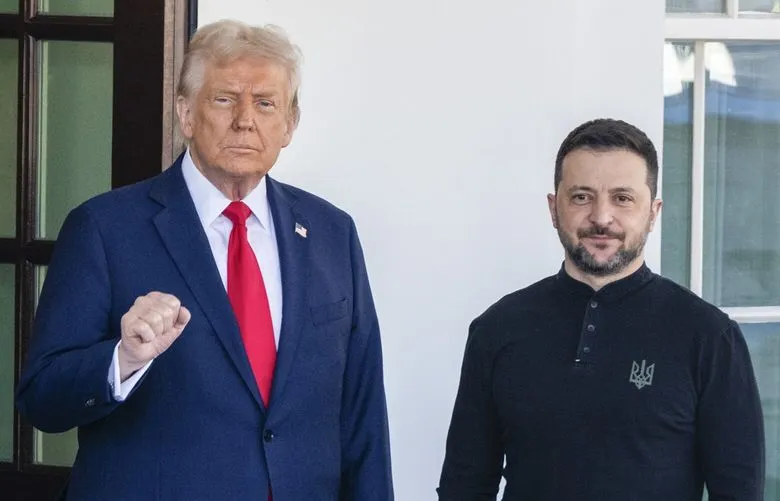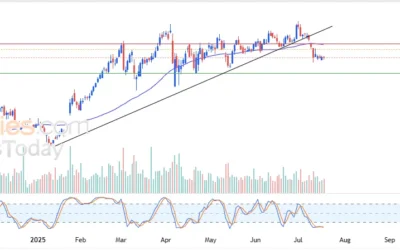Introduction
The ongoing conflict between Ukraine and Russia has been a source of international tension and humanitarian crises since it escalated in 2022. As both nations navigate this complex landscape, faint signs of dialogue have emerged, offering a glimmer of hope amidst nearly two years of war. Ukrainian President Volodymyr Zelenskyy has called for talks with Russia next week, prompting discussions about potential pathways toward peace. Meanwhile, the Kremlin has acknowledged President Vladimir Putin’s openness to a negotiated settlement, albeit under stringent conditions where Russia’s military objectives must first be met.
Ukraine’s Call for Dialogue
In a significant development, President Zelenskyy has publicly expressed a willingness to engage in talks with Russia, emphasizing that these discussions are crucial for restoring peace in Ukraine. Zelenskyy, who has become synonymous with resilience in the face of adversity, continues to uphold that diplomatic dialogue is essential—even as hostilities persist.
“We cannot and should not stop looking for peace,” Zelenskyy stated in a recent press conference. “The world has to unite around a common goal: to end this conflict.” With over 14 million people displaced and countless lives lost, the dire humanitarian needs accentuate the urgency for talks. The Ukrainian populace, fatigued by constant conflict, is yearning for stability and a return to normalcy, further underpinning the importance of Zelenskyy’s call.
The Kremlin’s Stance
On the other side of the geopolitical divide, the Kremlin has issued a carefully worded response. According to Kremlin spokesperson Dmitry Peskov, President Putin remains open to peace negotiations; however, he insists that talks can only begin after Russia achieves its military objectives in Ukraine. This statement casts a shadow over the prospects for dialogue, as the timelines and definitions of these objectives remain ambiguous and contentious.
“Negotiations can only proceed if the results of the special military operation are unequivocally achieved,” Peskov articulated, highlighting the Kremlin’s stance that prior military gains must first be secured before any meaningful discussions can take place. This insistence raises questions about whether genuine dialogue is possible or if it serves merely as a diversion tactic by the Kremlin.
Regional and Global Implications
The potential for dialogue climaxing amid ongoing battles can have various implications. For Ukraine, the call for talks may be seen as a strategy to strengthen its position on the global stage while simultaneously propagating an image of a resilient yet reasonable government. The global community is closely watching these developments, as a peaceful resolution could have transformative effects on Eastern Europe and beyond.
However, for Russia, the narrative remains complex. By claiming openness to negotiations while simultaneously asserting military preconditions, Russia aims to retain control over the narrative both domestically and internationally. For Putin, maintaining the image of a strong leader who has not only defended Russia’s interests but also remains willing to negotiate creates significant political leverage.
The International Community’s Role
The international community, especially Western allies of Ukraine, are expected to play a crucial role in this evolving scenario. Nations such as the United States and members of the European Union, alongside organizations like NATO, have provided military and humanitarian support to Ukraine since the onset of the war. Recent developments suggest both diplomatic and material support will continue, but the focus may increasingly shift toward encouraging discussions between Kyiv and Moscow.
Moreover, the prospect of a peace deal might also hinge on broader geopolitical considerations, including Western sanctions on Russia, which have profoundly impacted its economy and military capabilities. Calls for de-escalation are echoing across various platforms as leaders recognize that prolonging the conflict yields humanitarian disasters, economic crisis, and geopolitical instability.
Public Opinion and the Path Forward
The white noise of war has led to significant shifts in public opinion both in Ukraine and Russia. In Ukraine, the population largely supports continued resistance against perceived aggressor Russia. However, the hum of war fatigue and economic hardships are palpable, leading many to welcome dialogue cautiously.
Conversely, within Russia, public sentiment has become increasingly layered. While state-controlled narratives portray a unified front, underlying discontent grows with the rising costs of war—a toll that Russia cannot ignore indefinitely. Many Russians, particularly those directly impacted, are beginning to question the ongoing military engagement and the ever-looming threat of sanctions crippling the economy.
Challenges to Negotiation
As both sides consider the implications of talks, several challenges emerge. Each party’s preconditions for negotiation are harbingers of potential impasses. Ukraine is likely to demand assurances regarding its territorial integrity, security assurances, and possibly territorial concessions. In contrast, Russia’s insistence on maintaining its grip over certain areas complicates any potential agreement.
Moreover, third-party involvement could either facilitate or complicate negotiations. Reactions from countries like Turkey and France—or even the UN—could significantly sway outcomes, either by applying pressure on Russia or supporting Ukraine’s stance. The influence of NGOs and humanitarian organizations in asserting the human cost of the war cannot be underestimated, with advocacy plays highlighting the dire need for peace.
The Power of Diplomacy
Despite significant challenges, the prospect of dialogue holds promise. Peace talks can lead to ceasefires, which in turn create necessary space for humanitarian aid and rebuilding efforts. If managed effectively, the pathway through dialogue could breed opportunities for reconciliation and rebuilding of trust—a vital component for long-lasting peace.
As the world watches, the upcoming discussions between Ukraine and Russia might shape the course of this conflict. While skepticism is natural, the very act of engaging in dialogue signifies a fundamental shift from a mindset of violence to one seeking resolution, marking an essential step toward a much-anticipated ceasefire.
Conclusion
In the grand scheme, while Zelenskyy’s call for talks and Putin’s guarded openness signal a willingness to negotiate, they are just that—signals. With each side entrenched in their positions, the challenges remain formidable. Nonetheless, this renewed effort to explore avenues of peace, regardless of the stalemate, offers hope that one day, the conflict in Ukraine might reach a resolution that echoes across borders, fostering stability in a region long marred by discord. For now, the world remains on the edge of its seat, hoping for a breakthrough that so many have dreamed of since the war began.





